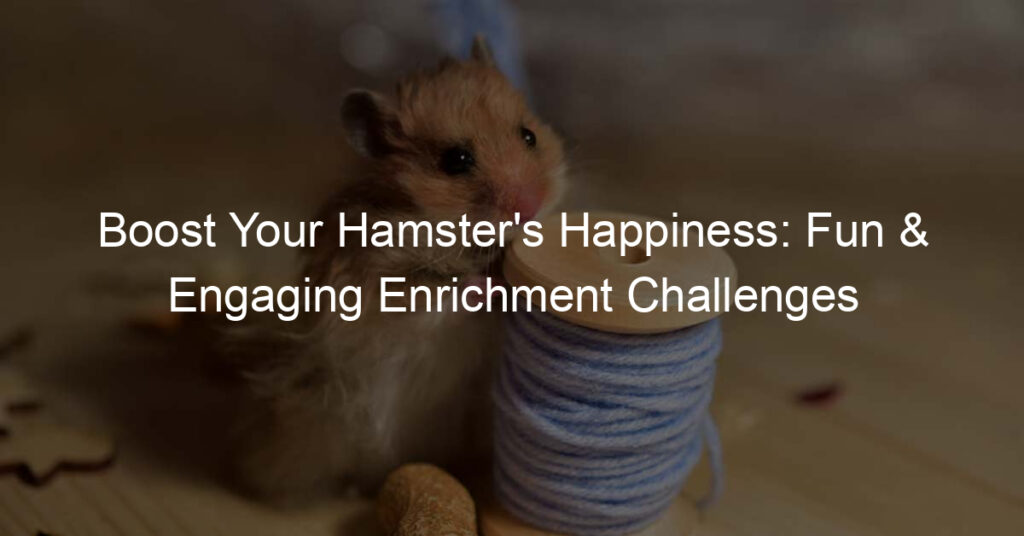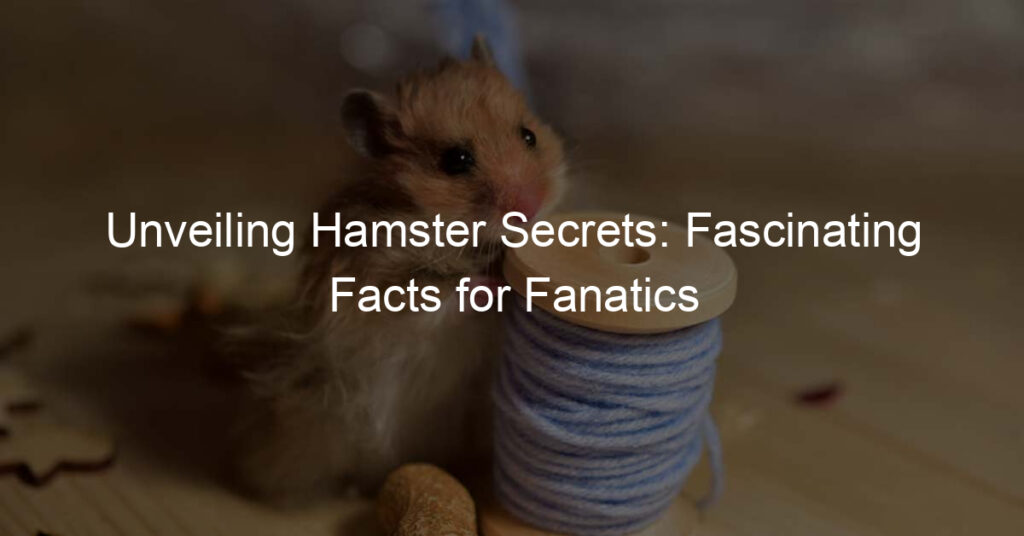
Introduction to Hamster Training
Welcome to the exciting world of hamster training! This guide aims to provide you with a comprehensive understanding of hamster behavior and the importance of training your furry friend. Let’s embark on this journey together, and make your hamster’s life more enjoyable and fulfilling.
- Understanding the Basics of Hamster Behavior
Before we dive into the specifics of training, it’s crucial to understand the basics of hamster behavior. Hamsters are nocturnal animals, meaning they are most active during the night. They are also solitary creatures, preferring to live alone. Understanding these fundamental behaviors can help you tailor your training sessions to your hamster’s natural habits.
Hamsters are also known for their love of burrowing and their excellent memory. They can remember their way through complex tunnels, which is a skill they use in the wild to find food and avoid predators. This means that your hamster has the potential to learn and remember tricks and routines!
- Importance of Training a Hamster
Training a hamster is not just about teaching them tricks for our amusement. It’s about providing them with mental stimulation and physical exercise, which are essential for their overall health and happiness. Training can also strengthen the bond between you and your hamster, making your interactions more enjoyable for both of you.
Moreover, training can help reduce behavioral problems. For instance, a well-trained hamster is less likely to bite or escape. It’s also a great way to keep your hamster engaged and prevent boredom, which can lead to stress and health issues.
In conclusion, understanding your hamster’s behavior and investing time in training can significantly enhance your pet’s quality of life. Stay tuned for our next section, where we will guide you on how to get started with hamster training.
Hamster Training Guide: Getting Started
Training your hamster can be a fun and rewarding experience. However, before you begin, it’s crucial to set up the right environment for training. This will help your hamster feel safe and comfortable, which will make the training process much smoother.
Choosing the Right Environment for Training
When it comes to training your hamster, the environment plays a significant role. It’s important to create a space where your hamster feels safe and can focus on the training. Here are some key factors to consider:
- Creating a safe space for your hamster: Hamsters are small creatures and can easily get scared or stressed in a large, open space. Therefore, it’s important to create a small, enclosed area for training. This could be a playpen or a section of a room that’s been cordoned off. Make sure the area is free from any hazards like electrical wires or small objects that your hamster could swallow.
- Importance of a quiet and calm environment: Hamsters have sensitive hearing and can get easily startled by loud noises. Therefore, choose a quiet room for training, away from the hustle and bustle of the house. Avoid playing loud music or having the TV on during training sessions. A calm and quiet environment will help your hamster concentrate better on the tasks at hand.
Remember, the goal is to make your hamster feel safe and comfortable during training. A well-chosen environment will not only make the training process easier but also help build a stronger bond between you and your hamster.
Understanding Hamster Behavior
As a hamster owner, it’s crucial to understand your pet’s behavior. This knowledge can help you provide a better environment for your hamster, making training more effective. Let’s delve into two key aspects of hamster behavior: recognizing signs of stress and understanding their body language.
- Recognizing Signs of Stress in Hamsters
- Excessive grooming: If your hamster is grooming itself more than usual, it may be stressed.
- Loss of appetite: A stressed hamster might eat less or not at all.
- Aggressive behavior: If your hamster is biting or acting aggressively, it could be a sign of stress.
- Understanding Hamster Body Language
- Standing on hind legs: If your hamster stands on its hind legs with its ears perked up, it’s likely curious or alert.
- Curling into a ball: When a hamster curls into a ball, it’s usually scared or feels threatened.
- Chewing on cage bars: This could indicate boredom or a need for more exercise.
Hamsters, like humans, can experience stress. It’s important to recognize these signs early to ensure your hamster’s well-being. Some common signs of stress in hamsters include:
Remember, a happy hamster is more likely to respond positively to training. If you notice any of these signs, it’s important to address the cause of the stress immediately.
Hamsters communicate a lot through their body language. Understanding these signals can help you interact better with your pet. Here are a few common hamster body language signs:
Understanding these behaviors can help you tailor your training methods to your hamster’s needs and personality.
In conclusion, understanding your hamster’s behavior is a crucial step in successful training. By recognizing signs of stress and understanding their body language, you can create a safe and comfortable environment for your hamster, making training more effective and enjoyable for both of you.
Teaching Tricks to Hamsters: Step-by-Step Guide
Training your hamster can be an enjoyable and rewarding experience. It not only stimulates your pet’s mind but also strengthens your bond. Let’s start with some basic commands.
Basic Hamster Commands
Before we delve into the advanced tricks, it’s essential to start with the basics. Here are two fundamental commands that every hamster owner should teach their pet:
- Teaching your hamster to come when called
- Training your hamster to stay
Training your hamster to respond to its name is a vital first step. Start by saying your hamster’s name every time you interact with it. Be consistent and patient. Reward your hamster with a small treat when it responds to its name. This positive reinforcement will encourage your hamster to associate its name with good things.
Teaching your hamster to stay is a bit more challenging, but with persistence, it can be achieved. Begin by placing your hamster in a safe, enclosed area. Say the command “stay” in a firm, but gentle voice. If your hamster remains in place, reward it with a treat. Repeat this process regularly until your hamster understands the command.
Remember, training should be a fun experience for both you and your hamster. Always use positive reinforcement and never punish your hamster. With patience and consistency, your hamster will soon be responding to these basic commands.
Advanced Hamster Tricks
Once your hamster has mastered the basic commands, it’s time to move on to some more advanced tricks. These tricks not only provide mental stimulation for your hamster but also offer a fun way for you to bond with your furry friend. Let’s explore how to teach your hamster to fetch and navigate a maze.
- Teaching Your Hamster to Fetch
- Start by choosing a small, lightweight object that your hamster can comfortably carry in its mouth. A small piece of paper or a lightweight plastic ball works well.
- Place the object near your hamster and let it sniff and explore it.
- Once your hamster is familiar with the object, throw it a short distance away. Your hamster’s natural curiosity will make it follow the object.
- Encourage your hamster to bring the object back to you by offering a treat as a reward. Remember, positive reinforcement is key!
- Training Your Hamster to Navigate a Maze
- Start by creating a simple maze using cardboard or plastic tunnels. Make sure the maze is safe and there are no sharp edges.
- Place your hamster at the start of the maze and a treat at the end. The smell of the treat will motivate your hamster to navigate through the maze.
- Initially, guide your hamster through the maze by gently nudging it in the right direction. As your hamster becomes more comfortable, it will start to navigate the maze on its own.
- Remember to reward your hamster with the treat once it successfully completes the maze. This will encourage your hamster to repeat the behavior in the future.
Teaching your hamster to fetch is a fun and engaging trick. It’s not just dogs that can fetch; with patience and the right approach, your hamster can too! Here’s how:
Hamsters are naturally curious creatures, and they love to explore. Training your hamster to navigate a maze not only stimulates their mind but also provides them with physical exercise. Here’s a step-by-step guide:
Remember, patience and consistency are key when teaching your hamster new tricks. Always ensure your hamster is comfortable and having fun during the training sessions. With time and practice, your hamster will be able to perform these advanced tricks with ease.
Effective Training Techniques for Hamsters
Training your hamster can be a fun and rewarding experience. One of the most effective techniques is positive reinforcement. Let’s explore this concept in more detail.
Positive Reinforcement
Positive reinforcement is a training method that involves rewarding your hamster for good behavior. This technique encourages your hamster to repeat the behavior in the future.
- Understanding the concept of positive reinforcement
- Examples of positive reinforcement in hamster training
Positive reinforcement is based on the simple idea of rewarding good behavior. When your hamster does something you want it to do, you give it a reward. This could be a tasty treat, a favorite toy, or even a bit of extra playtime. The key is to make sure the reward is something your hamster really enjoys. This way, your hamster will start to associate the behavior with the reward, and will be more likely to do it again in the future.
There are many ways you can use positive reinforcement to train your hamster. For example, if you’re trying to teach your hamster to use a hamster wheel, you could reward it with a treat every time it gets on the wheel. Or, if you’re trying to train your hamster to come when called, you could give it a treat every time it responds to its name. Remember, the key is consistency. Always reward the behavior you want to see, and your hamster will soon start to understand what you expect.
In conclusion, positive reinforcement is an effective and humane way to train your hamster. It’s all about rewarding good behavior and creating a positive association in your hamster’s mind. With patience and consistency, you’ll be amazed at what your little friend can learn!
Consistency in Training
When it comes to training your hamster, consistency is key. It’s not just about teaching them tricks, but also about establishing a routine that they can understand and follow. Let’s delve into the importance of a consistent training schedule and how it affects hamster learning.
- Importance of a Consistent Training Schedule
- How Consistency Affects Hamster Learning
Consistency in training is crucial for several reasons. First, it helps your hamster understand what is expected of them. Hamsters are creatures of habit, and they thrive on routine. By training your hamster at the same time each day, they will start to anticipate the training sessions and be more receptive to learning.
Second, consistency helps to reinforce the behaviors you are teaching. Each time your hamster successfully performs a trick or follows a command, it strengthens their understanding of that behavior. The more often they practice, the better they will become.
Finally, a consistent training schedule helps to build trust between you and your hamster. By spending regular, quality time together, your hamster will learn to see you as a source of positive experiences, which can enhance their overall wellbeing.
Consistency plays a significant role in how quickly and effectively your hamster learns. When training is sporadic or inconsistent, it can confuse your hamster and slow down their learning process. On the other hand, when training is consistent, it creates a predictable pattern that your hamster can understand and follow.
For instance, if you are teaching your hamster to spin in a circle, and you practice this trick with them at the same time each day, they will start to associate that specific time with spinning. This association can help them learn the trick faster and perform it more reliably.
Moreover, consistency in training can also reduce stress for your hamster. Knowing what to expect can make the training sessions more enjoyable and less stressful, which can further enhance their learning and overall wellbeing.
In conclusion, consistency in training is essential for effective hamster training. It helps your hamster understand what is expected of them, reinforces the behaviors you are teaching, and builds trust between you and your hamster. So, make sure to establish a consistent training schedule and stick to it for the best results.
Hamster Care and Training: Health Considerations
When it comes to training your hamster, it’s not just about teaching them tricks and behaviors. A significant part of the process involves ensuring their health and well-being. This section will focus on the importance of regular vet checkups and how they can aid in training your hamster.
Importance of Regular Vet Checkups
Regular vet checkups are crucial for your hamster’s health. These visits allow the vet to monitor your hamster’s health and detect any potential issues early. Early detection can lead to more effective treatment and a healthier, happier hamster.
- How vet checkups can aid in training
- Recognizing signs of health issues in hamsters
Vet checkups can also play a significant role in training your hamster. A healthy hamster is more likely to respond well to training. If your hamster is feeling unwell, they may not be as responsive or willing to learn new tricks. Regular checkups ensure your hamster is in the best possible health, making training sessions more effective.
It’s important to know the signs of health issues in hamsters. These can include changes in eating or drinking habits, lethargy, weight loss, or changes in their fur. If you notice any of these signs, it’s essential to take your hamster to the vet as soon as possible. Regular vet visits can help you become more familiar with these signs, allowing you to act quickly if your hamster’s health changes.
In conclusion, regular vet checkups are an essential part of hamster care and training. They ensure your hamster is healthy and ready to learn, making your training sessions more effective. So, remember to schedule regular vet visits for your furry friend.
Training a Hamster at Home: Practical Tips
Training your hamster at home can be a rewarding experience for both you and your furry friend. It not only enhances your bond but also keeps your hamster mentally stimulated. One of the key aspects of successful hamster training is creating a consistent training schedule. Let’s delve into how you can do this effectively.
Creating a Training Schedule
Creating a training schedule for your hamster is crucial. It helps in establishing a routine, making the training process smoother and more effective. Here are some tips on how to create an effective training schedule and the importance of regular training sessions.
- How to create an effective training schedule
- Importance of regular training sessions
Start by setting aside a specific time each day for training. Hamsters are nocturnal, so evenings might be the best time. Keep the training sessions short, about 10-15 minutes, to keep your hamster’s attention. Make sure to include different types of training activities in your schedule. This could be a mix of obedience training, trick training, and free play time.
Regular training sessions are essential for your hamster’s learning process. Consistency helps reinforce the behaviors you are teaching, making them more likely to stick. It also helps your hamster understand what is expected of them. Regular training doesn’t mean you have to train for long hours. Short, consistent sessions often yield better results than infrequent, long sessions.
In conclusion, creating a training schedule and maintaining regular training sessions are key to effectively train your hamster at home. Remember, patience and consistency are your best allies in this process. Happy training!
Dealing with Training Challenges
Training your hamster can be a rewarding experience, but it’s not without its challenges. Here are some practical tips on how to handle common training issues.
- What to do when your hamster is not responding to training
- Patience: Remember, every hamster learns at its own pace. Keep your training sessions short and sweet to avoid overwhelming your pet.
- Consistency: Keep your training methods consistent. Changing the way you train can confuse your hamster.
- Positive reinforcement: Reward your hamster with treats or affection when it performs the desired action. This will encourage it to repeat the behavior.
- How to handle a scared or anxious hamster
- Comfortable environment: Make sure your hamster’s training area is quiet and free from distractions. This can help reduce its anxiety.
- Gentle handling: Always handle your hamster gently and calmly. Avoid sudden movements that might scare it.
- Slow progress: Don’t rush the training process. Let your hamster get used to each step before moving on to the next.
Firstly, don’t panic. Hamsters are intelligent creatures, but they may take some time to understand what you’re trying to teach them. Here are some steps you can take:
If your hamster still doesn’t respond to training, it might be a good idea to consult with a vet or a professional hamster trainer.
Hamsters can get scared or anxious, especially during training sessions. Here’s how you can help them:
Remember, a scared or anxious hamster might not be in the right state of mind for training. If your hamster seems particularly stressed, it might be best to postpone the training session and give it some time to relax.
Conclusion: Enjoying the Rewards of Hamster Training
Training your hamster is not only a fun and engaging activity, but it also brings a multitude of benefits for both you and your furry friend. Let’s wrap up by highlighting the rewards of a well-trained hamster and the importance of continuous learning for your pet.
- Benefits of a well-trained hamster
- Continuing education for your hamster
Training your hamster does more than just teach them tricks. It helps to stimulate their mind, keeping them active and happy. A well-trained hamster is also easier to handle, making tasks like feeding and cleaning less stressful. Moreover, it strengthens the bond between you and your pet, enhancing the overall pet ownership experience.
Hamster training should not be a one-time event. Just like humans, hamsters can benefit from continuous learning. Regular training sessions help to keep their minds sharp and their skills honed. It also provides an excellent opportunity for you to spend quality time with your pet, further deepening your bond.
In conclusion, hamster training is a rewarding endeavor that offers numerous benefits. It’s a journey of discovery and bonding that enhances the quality of life for both you and your pet. So, keep those training sessions going and enjoy the wonderful rewards of a well-trained hamster!








